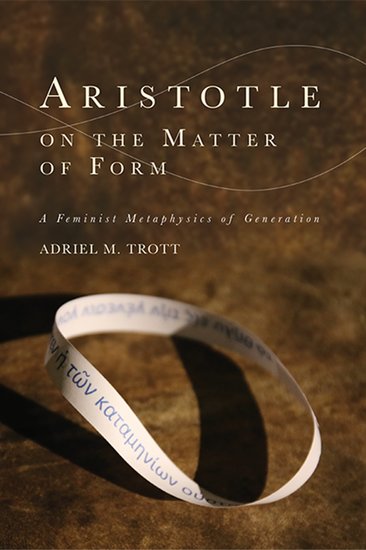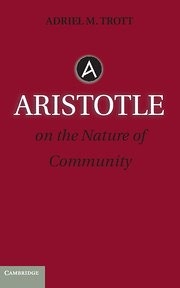Sara Ahmed On Racism and Institutionalized Diversity

As I was writing my book on Aristotle’s political thought, I became interested in how and why institutions fail to achieve the end they purport to achieve almost as a matter of course. Institutions seem to shift their goal from the end they were established to fulfill to merely preserving their existence. What happens is that the desire to preserve their existence contravenes their efforts to fulfill the goal for which they were established. I wrote about this in a critique of Stieg Larsson’s Girl With a Dragon Tattoo series. The notion that institutions become more concerned with their preservation than their proclaimed goal now resounds from every corner (eg., protecting the police force trumps the peace and justice the police force is meant to maintain and enforce).
Over the last two months, I have been making my way slowly through Sara Ahmed’s book On Being Included: Racism and Diversity In Institutional Life (Duke University Press 2012). Ahmed argues that institutions institutionalize ‘diversity’ as a way to protect and preserve themselves without ever adequately recognizing diversity. Ahmed exposes the ways that what seems to be institutional recognition becomes institutional justification of ignoring its grave problems. So the rest of this post isn’t so much a review (good reviews can be read at Society and Space, Graduate Journal of Social Science, Erina Frost, Hypatia Reviews Online and the American Association of University Professors), as a list of the ways that diversity works that contribute to how institutions fail to diversify through appeals to their instituted diversity projects.
So the list includes three things: 1) diversity statements function as non-performatives; 2) diversity programs and policies are implemented to protect the institution rather than to further diversify the institution; 3) the language of diversity comes to have commercial value and to reflect the commercial value of the institution.
Diversity statements as non-performatives.
Having a policy protects the institution from actually having to perform the policy.
- Diversity policies aim to make the institution declare something to be its goal so that it can be held accountable for that goal and it can be exposed for failing to achieve that goal and even failing to work toward the goal. But the policy becomes the evidence to the institution that it is achieving the goal. The institution pretends as if the policy is the work. But it is people who must put the policy into action or it will only ever be lifeless policy. (Ahmed’s analysis brings new skepticism to the American Philosophical Association’s effort to change the exclusionary structure of the discipline of philosophy by introducing a code of conduct.)
- To institutionalize the policy of diversity is to allow it to be forgotten. If the institution is accused of having forgotten diversity, it can point to the office or policy of diversity and say, it’s institutionalized. What was supposed to become automatic, what was supposed to become habit, in practice becomes just a defense of the institution with no real movement toward inclusion. Ahmed writes, “For a commitment to do something, you must do something ‘with it.'” (120)
- Saying, “We are diverse,” creates the idea that the institution is diverse without having to create the diversity of the institution. The claim also operates a floating signifier, a moving target, that means whatever it needs to mean for the claim to be true.
Diversity programs & policies function to protect the institution.
- Diversity work becomes about protecting the right image and correcting the wrong one. Diversity efforts aim to change perceptions that the institution is not diverse rather than making it diverse.
- Diversity as practice of hospitality that establishes whiteness as host and person of color as guest. The institution’s claim to welcome diversity inscribes whiteness as the owner of the institution that extends a gracious welcome to people of color. Ahmed notes that “Institutional whiteness is about the reproduction of likeness.” Institutions claim to want diversity, but want use language like “the right fit” to find faculty (and students) who are like those who are already there and thereby function, Ahmed says, as “kinship technologies,” ways of reproducing the same social relations.
- ‘Diversity’ makes the institution feel good about itself and so it makes of the one who has to continually hold up a picture of the institution to itself a killjoy. People talk about “getting sick of hearing about” diversity and racism and make those who keep bringing up the problem the problem. To be uncomfortable in the institution because of its failure to be diverse is to make the institution have a problem, to be the cause of the problem, instead of the institution being the cause of the discomfort it causes due to its inability to decenter itself.
- ‘Good practice’ of diversity as boxes that can be checked–online diversity training, Title IX training–ways of achieving compliance, but not actually diversity.
‘Diversity’ as commercial value.
- The language of ‘diversity’ makes the institution seem more valuble, but that’s not the only way that it is has commercial value. Diversity itself is something that must be managed and valued.
- As a positive project, diversity is separated from projects that aim to challenge injustice and inequalities in the institution. Ahmed writes, “Diversity can thus function as a containment strategy.” (53)
- Diversity is viewed by the institution as a matter of optics, of arranging things in the right way, rather than of changing the institution to right the injustices of its whiteness.
- Diversity as a term becomes a part of the “technology of excellence”- what the institution does and what it is compelled to do in order to achieve excellence. In this way, diversity becomes a key element in “accumulation of organizational value” (110).
Ahmed reminds us that institutions are instituted, formed by actions. They are not a fait accompli. They can change. They can become otherwise. Therefore, to say that something is the way it is because it is the policy, tradition or institutional practice is to shirk responsibility by suggesting that those things are not formed by and due to individual actions but by some abstract institution, whatever that is.
I’ll conclude with a quote from Ahmed:
One of my primary aims has been to describe the physical and emotional labor of “banging your head against a brick wall.” I want to expand the terms of my argument here by thinking of diversity work in two distinct but related ways. First, diversity work can refer to work that has the explicit aim of transforming an institution; second, diversity work can be what is required, or what we do, when we do not “quite” inhabit the norms of an institution. When you don’t quite inhabit the norms, or you aim to transform them, you notice them as you come up against them. The wall is what we come up against: the sedimentation of history into a barrier that is solid and tangible in the present, a barrier to change as well as to the mobility of some, a barrier that remains invisible to those who can flow into the spaces created by institutions. (175)




